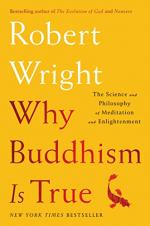
|
| Name: _________________________ | Period: ___________________ |
This quiz consists of 5 multiple choice and 5 short answer questions through Chapters 7-9.
Multiple Choice Questions
1. What do psychologists call the condition of "being stuck" in the natural human cycle of ultimately futile pleasure-seeking?
(a) The never-ending spiral.
(b) The hedonic treadmill.
(c) The hamster wheel.
(d) The great illusion.
2. Whom does the author name as the two people who would be on the highest end of the spectrum as far as ease of meditation goes?
(a) The Dalai Lama and Bob Ross.
(b) The Dalai Lama and Mister Rogers.
(c) Mister Rogers and Bob Ross.
(d) The Dalai Lama and Mahatma Gandhi.
3. The author states that natural selection does not want people to be happy, but instead wants them to be what?
(a) Compassionate.
(b) Productive.
(c) Healthy.
(d) Tenacious.
4. In what decade were the famous series of experiments conducted by Benjamin Libet?
(a) The 1960s.
(b) The 1990s.
(c) The 1970s.
(d) The 1980s.
5. What kind of benefits does the author describe self-delusion as harboring?
(a) Darwinian.
(b) Personal.
(c) Evolutionary.
(d) Intellectual.
Short Answer Questions
1. What disorder does the author say makes it difficult for him to meditate?
2. In what state did the author attend his very first silent meditation retreat?
3. The author notes that it is generally easier for one to distance oneself from one’s emotions than one’s what?
4. The first time the author attended a week-long meditation retreat, he was allowed to speak how many times?
5. What animals are involved in the pellet experiment described by the author?
|
This section contains 241 words (approx. 1 page at 300 words per page) |

|




